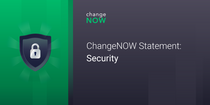Hedera Hashgraph (HBAR) and Other Atypical Blockchains: How To
Headquartered in Richardson, Texas, Hedera Hashgraph was founded in 2018 by Leemon Baird and Mance Harmon. It is owned and governed by some of the world’s largest organizations, such as Boeing, Google, LG, etc. Hedera is primarily a hashgraph platform that offers a distributed public ledger enabling anyone to develop globally decentralized applications in a secure, fast, and easy way. Before delving deeper into the features of Hedera Hashgraph, let’s have a quick look at what hashgraph is and whether it is similar or different from the blockchain.
Hashgraph and Blockchain: A Comparative Overview
In both hashgraph and blockchain, any participant is eligible to create a transaction that gets included in a block. Then, eventually, the block spreads throughout the network. What happens in blockchain-based networks is that these blocks of transactions form a single long chain. If two blocks are formed at the same time, the nodes choose one and discard the other. It results in blocks growing like a tree with a huge trunk but no branches at all. Since hashgraph does not discard any block from the chain, it gives grounds for using powerful tools similar to the Byzantine agreement protocols. Apart from being fair, hashgraph is also fast, efficient, inexpensive, timestamped, and DoS-resistant.
Hedera Hashgraph
Often termed as “the trust layer of the internet”, Hedera Hashgraph is a decentralized public network useful for a wide range of stakeholders. Whether a startup or enterprise, a creator or a consumer, anyone can leverage Hedera to build fast, fair, and highly secure applications. Hedera Hashgraph’s Proof-of-Stake public network, powered by the hashgraph consensus, ensures blazing fast speed, low consumption of bandwidth, and high throughput.
Using Hedera
- Hedera Hashgraph is used by The Hedera Consensus service, or the HCS. The HCS works as a trust layer for any application or permissioned network and enables it to create an immutable and verifiable message log. The messages generating out of the application are submitted to the Hedera network. Upon achieving consensus in the network, each of them receives a timestamp, so the assets could be tracked through a supply chain. It is also used to create events’ logs within an auditable advertising platform. Finally, enterprises can use it to create decentralized ordering services.
- Hedera Hashgraph’s crypto APIs enable tools helping to manage accounts and facilitate scalable and less expensive transactions leveraging the HBAR native coin.
What is HBAR?
Hedera Hashgraph coin has a circulating supply of 6,229,794,352 HBAR. It serves a dual purpose of both empowering and protecting the network. Let’s have a quick overview of both these functions of HBAR:
- As the Network Energiser, HBAR helps to keep the network active by working as a medium of exchange. Developers use these native coins to pay for the services provided by the network. These services include running a smart contract, storing a file, or transferring the currencies. By leveraging HBARs, developers can also build business models based on peer-to-peer payments and micropayments.
- As the Network Protector, HBAR is used for staking and weighting votes on transactions. This weighted voting makes it difficult for malicious actors to affect the consensus mechanism. To make their influence considerable, these actors would have to own at least one third of the network’s total HBAR supply. It is almost impossible to reach that level within the first five years.
HBAR Tokenomics
At the time of its launch, Hedera Hashgraph published an allocation schedule for 50 billion of HBAR tokens. The majority of 54.91% was allotted for the HEDERA Treasury. Another 16.30% was reserved for RCUs (restricted coin units). In RCUs, individuals vest into a right to receive several HBARs. The rest of the allocation went as follows:
- 14.5% reserved for SAFT investors.
- 5.0% reserved for SWIRLDS, Inc.
- 2.9% reserved for SAFT Management.
- 2.02% for SWIRLDS investors.
- 2.67% reserved for a coin purchase agreement.
- 1.20% turned out to be an Ecosystem reserve.
- 0.50% went to the Developer Community Funds.
Atypical Blockchains
Do all cryptocurrencies use blockchain? As it has been shown for Hedera Hashgraph, it’s not obligatory. At the same time, an opportunity to use blockchain beyond Bitcoin is quite recent. The decentralized cryptocurrency bandwagon’s diversity and the variety of ways to use these bitcoin alternatives make atypical blockchains a force to reckon with. It’s not necessary to use a “standard” blockchain in order to build your own cryptocurrency. “Atypical” blockchains are widely implemented in a great range of areas (the banking industry, the gaming industry, the real estate industry, etc.). In gaming, blockchain is leveraged to purchase in-game items and remove the large corporations’ intrusion (they often eat up a large chunk of the game developer’s revenue). In the real estate industry, blockchain works as a boon for real estate customers, who do not have to pay the middlemen a significant sum (1-2% of their total property value). Atypical blockchain networks are also being used for managing entertainment and sports events. Some platforms are even using their native tokens for supporting sports talents! ChangeNOW has no doubt this is a very interesting trend to follow and learn more about. Keep your eyes on Hedera Hashgraph: we’re sure it will surprise us!



